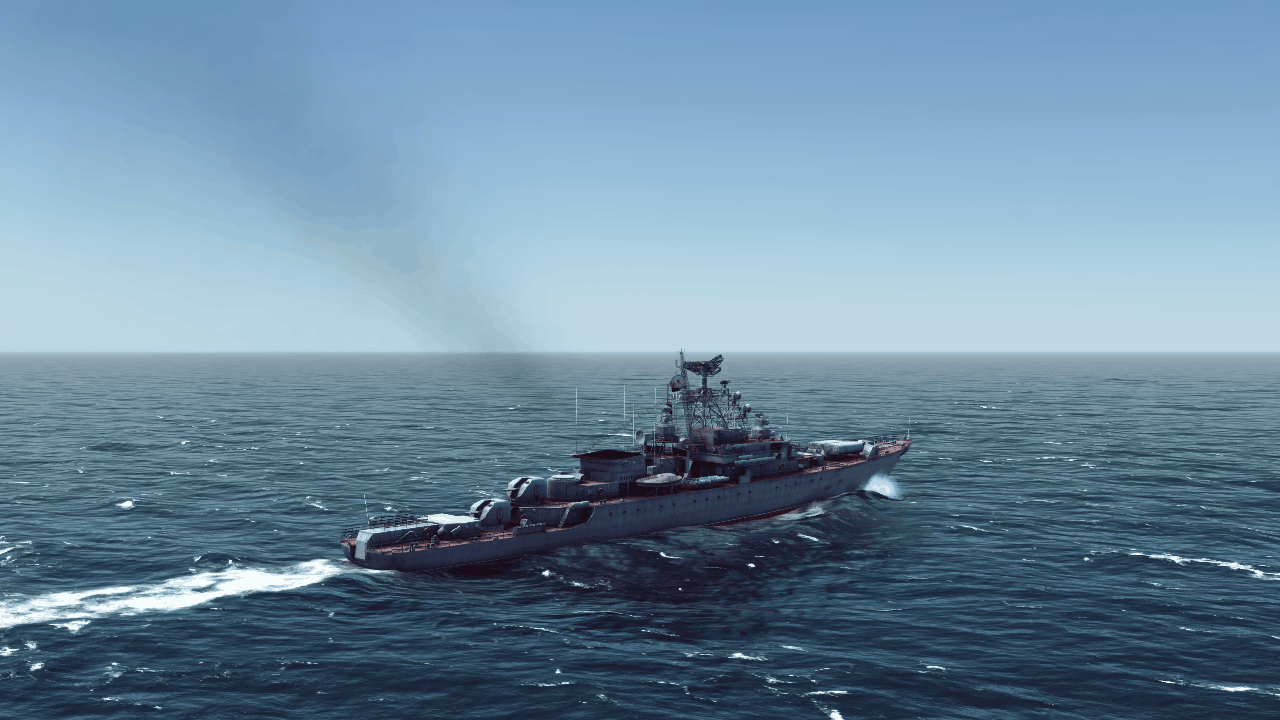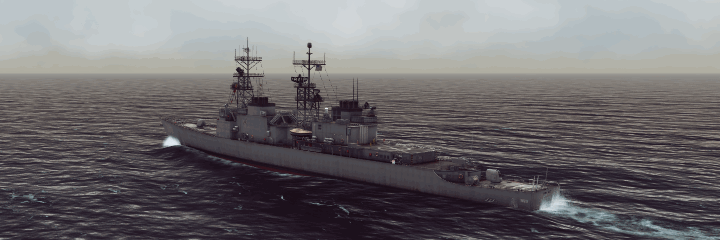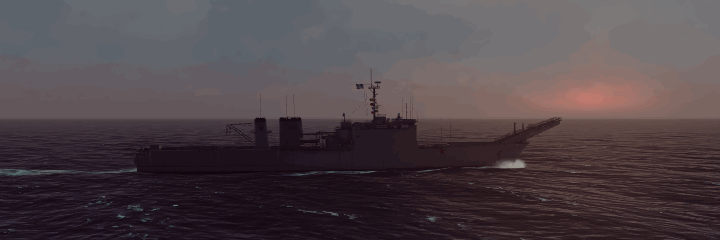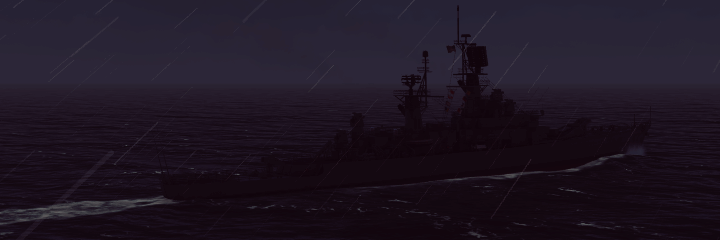Dev Diary #6 - Torpedoes and counter measures
Hello, everyone!
In this part of the dev diary we’re diving deep into the underwater realm to look at new additions regarding torpedoes and acoustic countermeasures in Sea Power made recently.
First, let’s discuss the torpedoes. In Sea Power, a torpedo can use both passive and active sonar seekers, detecting targets using our acoustic model. Torpedo acoustic detection is modeled just as other types of sonar in the game are, considering how much noise a target makes, how that noise is transmitted to the torpedo, and the torpedo’s own ability to detect said noise. Noise produced or reflected off of a target is dependent on the aspect and distance to the target, as well as the target’s type and class. Transmission then depends on the local speed sound profile (SSP), alongside layer and surface duct effects, controlling how much of the generated noise can get to the torpedo’s position. Finally, each torpedo has its own detection threshold. Wake homing torpedo guidance, as originally developed by the Soviets in the 1960’s, is to come soon.

Active and passive torpedoes use proportional navigation guidance to intercept a target detected by their sensors, allowing them to efficiently close with a target faster than a pure-pursuit approach would. This is particularly important in crossing or head-on engagements, where simple guidance requires torpedoes to engage in time (and fuel!) consuming stern chases, improving effectiveness.

With these newly en-lethalized torpedoes, one might hypothesize that submarines and surface ships are dead meat. Not so! Submarine and surface ship skippers in Sea Power will be able to exploit the very same acoustic model as a defense via sonar countermeasures, producing false targets to defend themselves against torpedo threats.
Countermeasures against acoustic homing go back as far as acoustic homing itself. The development of acoustic self-guided torpedoes by Germany in WW2 went hand in hand with the invention of the first acoustic countermeasures, such noisemakers and towed false targets. Post-war, and beginning in the 1960s, a new kind of sonar countermeasures, the self-propelled torpedo-like decoys was developed. Based on the ideas started with the WW2 era “Sieglinde” German noisemaker, these were equipped with a small electric motor allowing them to present a more realistic acoustic and motion profile to an attacking torpedo.
Even simple noisemakers evolved considerably since the end of the war. Originally, noisemakers were devices filled with chemical compounds that, on contact with sea water, react to produce tons of bubbles and noise. This air and sound creates both a plausible active and passive target for the simple acoustic homing torpedoes of the time - but as acoustic homing technology improved, so too did the countermeasures. Modern noisemakers now produce mechanical noise and even can jam active sonar with false high frequency acoustic pulse. These are relatively compact but short-lived devices that can be launched either from small torpedo tubes on a submarine (usually positioned aboard the hull) or from on deck countermeasure launchers on a surface ship.


Self-propelled decoys exist in Sea Power as well: decoys such as the MG-44 are essentially torpedoes with no warhead and reduced speed, substituted for equipment designed to imitate a submarine. Using narrow and broadband noise emitters, preprogrammed movement patterns, and even active sonar jamming, these decoys provide an even more realistic false target than their unpowered brethren. Today, Sea Power implements these as mobile noisemakers, using the aforementioned logic, but we plan to expand on this further.

In Sea Power the noisemakers have high noise and active sonar reflection parameters assigned to them, usually greater than can be expected from a real target, thereby presenting a torpedo with a shiny big acoustic signature to home on. Counteracting this, each torpedo also has a chance to recognize the false target and reject it based on the respective tech level parameter. The more modern and sophisticated the torpedo is, the higher its level of countermeasure rejection is, but each countermeasure also has a countervailing tech level. Thus, the electronic protect versus electronic attack continues the age-old shell and armor struggle in Sea Power.
In this part of the dev diary we’re diving deep into the underwater realm to look at new additions regarding torpedoes and acoustic countermeasures in Sea Power made recently.
First, let’s discuss the torpedoes. In Sea Power, a torpedo can use both passive and active sonar seekers, detecting targets using our acoustic model. Torpedo acoustic detection is modeled just as other types of sonar in the game are, considering how much noise a target makes, how that noise is transmitted to the torpedo, and the torpedo’s own ability to detect said noise. Noise produced or reflected off of a target is dependent on the aspect and distance to the target, as well as the target’s type and class. Transmission then depends on the local speed sound profile (SSP), alongside layer and surface duct effects, controlling how much of the generated noise can get to the torpedo’s position. Finally, each torpedo has its own detection threshold. Wake homing torpedo guidance, as originally developed by the Soviets in the 1960’s, is to come soon.

Active and passive torpedoes use proportional navigation guidance to intercept a target detected by their sensors, allowing them to efficiently close with a target faster than a pure-pursuit approach would. This is particularly important in crossing or head-on engagements, where simple guidance requires torpedoes to engage in time (and fuel!) consuming stern chases, improving effectiveness.

With these newly en-lethalized torpedoes, one might hypothesize that submarines and surface ships are dead meat. Not so! Submarine and surface ship skippers in Sea Power will be able to exploit the very same acoustic model as a defense via sonar countermeasures, producing false targets to defend themselves against torpedo threats.
Countermeasures against acoustic homing go back as far as acoustic homing itself. The development of acoustic self-guided torpedoes by Germany in WW2 went hand in hand with the invention of the first acoustic countermeasures, such noisemakers and towed false targets. Post-war, and beginning in the 1960s, a new kind of sonar countermeasures, the self-propelled torpedo-like decoys was developed. Based on the ideas started with the WW2 era “Sieglinde” German noisemaker, these were equipped with a small electric motor allowing them to present a more realistic acoustic and motion profile to an attacking torpedo.
Even simple noisemakers evolved considerably since the end of the war. Originally, noisemakers were devices filled with chemical compounds that, on contact with sea water, react to produce tons of bubbles and noise. This air and sound creates both a plausible active and passive target for the simple acoustic homing torpedoes of the time - but as acoustic homing technology improved, so too did the countermeasures. Modern noisemakers now produce mechanical noise and even can jam active sonar with false high frequency acoustic pulse. These are relatively compact but short-lived devices that can be launched either from small torpedo tubes on a submarine (usually positioned aboard the hull) or from on deck countermeasure launchers on a surface ship.


Self-propelled decoys exist in Sea Power as well: decoys such as the MG-44 are essentially torpedoes with no warhead and reduced speed, substituted for equipment designed to imitate a submarine. Using narrow and broadband noise emitters, preprogrammed movement patterns, and even active sonar jamming, these decoys provide an even more realistic false target than their unpowered brethren. Today, Sea Power implements these as mobile noisemakers, using the aforementioned logic, but we plan to expand on this further.

In Sea Power the noisemakers have high noise and active sonar reflection parameters assigned to them, usually greater than can be expected from a real target, thereby presenting a torpedo with a shiny big acoustic signature to home on. Counteracting this, each torpedo also has a chance to recognize the false target and reject it based on the respective tech level parameter. The more modern and sophisticated the torpedo is, the higher its level of countermeasure rejection is, but each countermeasure also has a countervailing tech level. Thus, the electronic protect versus electronic attack continues the age-old shell and armor struggle in Sea Power.


















